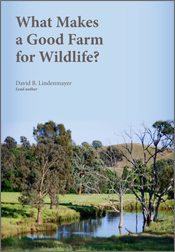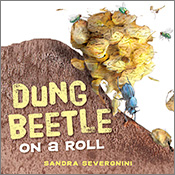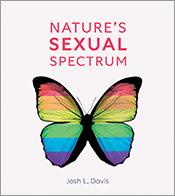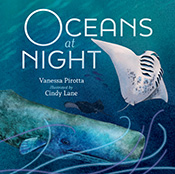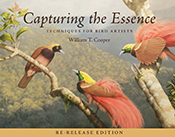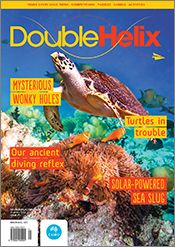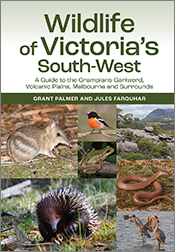What Makes a Good Farm for Wildlife?
By: David B Lindenmayer
Brings together extensive scientific learning on what makes a good farm for biodiversity.
This book brings together extensive scientific learning on what makes a good farm for biodiversity. Based on thirteen years of intensive research, it breaks the discussion into chapters on key environmental and vegetation assets and then discusses how to make these assets better for biodiversity. + Full description
The work encompasses information on vertebrates and invertebrates on farms and their relationships with significant vegetation and environmental assets: woodland remnants, plantings, paddocks, rocky outcrops and waterways. A chapter is dedicated to each asset and how it can be managed. In the final chapter, the authors discuss the aggregation of these assets at the farm level – bringing all of the information together and also highlighting some landscape-scale perspectives on agricultural management for enhanced biodiversity.
What Makes a Good Farm for Wildlife? is written in an engaging style and includes colour photographs and information boxes. It will be an important reference for landholders, hobby farmers, vineyard owners, naturalists interested in birds and other native animals, people from Catchment Management Authorities, natural resource managers and policy makers.
- Short descriptionNews
No longer available in a print edition.
Reviews
"My first impressions on flipping through the pages of this book are that the layout is superb and well organized, and the combination of text, good colour photos, diagrams and box text should appeal to a wide audience. As a conservation practitioner and ornithologist/ecologist living in north-west Tasmania what I like most about this book and what makes it different is the way David Lindenmayer and his team communicate their research findings to the lay public in a refreshing manner with clear, practical messages and interesting facets of plant-animal interactions of both vertebrates and invertebrates.
What Makes a Good Farm for Wildlife? by David Lindenmayer and his team is an excellent well presented book based on a decade of ecological research on farms located within the temperate woodlands of the South West Slopes of New South Wales. It should be essential reading for a wide audience... "
Richard Donaghey, Pacific Conservation Biology, pp. 377 - 378
"I love driving past a house and seeing the sign that indicates that it is ‘land for wildlife’. What makes a good farm for wildlife? David Lindenmayer's book shows how it can be done. There is deep discussion about a number of important topics, including the role played by different layers of remnant vegetation, such as the ground, understory and over story layers and also the importance of adjacency and landscape context. There is some fascinating information on a variety of topics, some that aren’t obvious as issues to consider, for instance whether old fence posts should be removed or left to decompose. The book discusses the Terrick Terrick National Park and the two kilometre fence that had fallen down, consisting of 270 posts. It was discovered over a nine month period, 38 curl snakes had been observed sheltering under the fence posts. Not only snakes but gecko, legless lizards, skinks and frogs all make made use of the refuge provided by the posts. Overall, a fascinating book and useful resource.
Kirsten Bacon, The Australian TAFE Teacher, Winter 2012, vol. 46/2, page 29
"It is rare to say that I read an environmental ‘text book’ cover to cover, but this book I did, and I find myself referring back to it regularly. I wish there were more books that synthesise the decades of scientific research that has been done on Australian ecosystems into a useable format for everyone. I congratulate David Lindenmayer as lead author and the 13 other author’s of this book. This is a must-have for Land for Wildlife members and supporters."
Deborah Metters, Land for Wildlife South East Queensland, May 2011, p.13
"Colour photography and succinct diagrams combine to make the messages clear and appealing."
Kate Nye-Butler, Landscope, Spring 2011
"… the use of key environmental and ecological principles ensures that this book is relevant at an international rather than local level."
Liz Webb, International Journal of Agricultural Sustainability, October 2011
"This book not only gives examples of good farms for wildlife, it offers practical guides for landholders to follow so they can actively contribute to increasing wildlife on their property, which in turn increases wildlife across this wide red land."
Alison J. Beaty, Australian Organic Producer, Winter 2011, p.29
"…a book that will inspire as well as educate land owners."
Grassroots, April/May 2011
"The book provides sensible, practical ideas for managing and building up remnant woodlands, replanting native vegetation, improving habitat in established paddocks, making the most of rocky outcrops, and integrating vegetation along creeks and around dams, all of it based on sound scientific evidence."
Rebecca Lines-Kelly, The Land, 5 May 2011
Details
ePDF | February 2011ISBN: 9780643101623
Publisher: CSIRO Publishing
Available from eRetailers
ePUB | February 2011
ISBN: 9780643102217
Publisher: CSIRO Publishing
Available from eRetailers
Features
- Written in an engaging style
- Many key information boxes embedded within the text will be of great interest to general readers
- High quality photographs
- Practical information based on very high quality scientific information
Contents
Chapter 1 Introduction and backgroundChapter 2 What makes a good remnant?
Chapter 3 What makes a good planting?
Chapter 4 What makes a paddock good for biodiversity?
Chapter 5 What makes a good rocky outcrop?
Chapter 6 What makes a good waterway?
Chapter 7 What makes a good farm for biodiversity?
Conclusion
Index
View the full table of contents (PDF).

